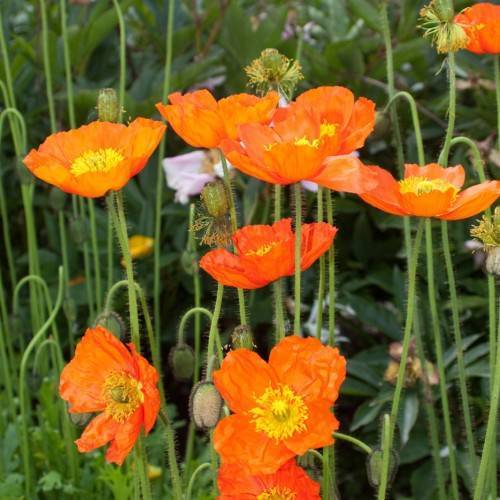
Arctic poppy
Papaver nudicaule var. croceum
Cycle:
Herbaceous Perennial
Watering:
Average
Hardiness Zone:
2 - 7
Flowers:
Flowers
Sun:
Full sun
Leaf:
Yes
Growth Rate:
Low
Maintenance:
Moderate
Drought Tolerant:
Yes
Salt Tolerant:
Yes
Care Level:
Medium
watering
Arctic poppies (Papaver nudicaule var. croceum) need a moderate amount of water, so avoid both over-watering and under-watering. Water thoroughly when the top few centimetres of soil begins to feel dry, and then let the soil partially dry before you water again. Aim to water roughly once per week. In the summertime, Arctic poppies may need to be watered a bit more often, and in winter, a bit less. When you water, use luke-warm water to avoid shocking the plant.
sunlight
Arctic poppy (Papaver nudicaule var. croceum) is a North American wildflower that has adapted to long, cold Arctic winters and short summer months of abundant sunlight. Arctic poppies thrive in full sun and perform best with 10-12 hours of direct sunlight each day during the summer months. They should be sheltered from extreme temperatures and intense wind exposure. When growing indoors, the Arctic poppy needs to be placed in a bright, sunny window to get enough light. In the outdoor summer months, the Arctic poppy prefers morning sun and bright afternoon partial shade. During winter months, the Arctic poppy needs bright filtered sunlight and temperatures above -30 F.
pruning
Arctic poppies should be pruned regularly in early summer and again in late summer. Pruning in early summer encourages new growth and helps keep the plant tidy and attractive, while pruning in late summer can help control unruly growth and keep the plant's size in check. Before pruning in either season, remove any dead or damaged stems and foliage. For the early summer pruning, cut back the stems to their base. This helps to promote new growth and encourage a bushier structure for the Arctic poppy. Some light shaping can also be done in these early summer prunings, if desired. For late summer pruning, cut back no more than 1/3 of the stems. This will help to control the size of the Arctic poppy while not hindering its ability to withstand colder temperatures in autumn and winter. Again, some light shaping can be done if desired.
